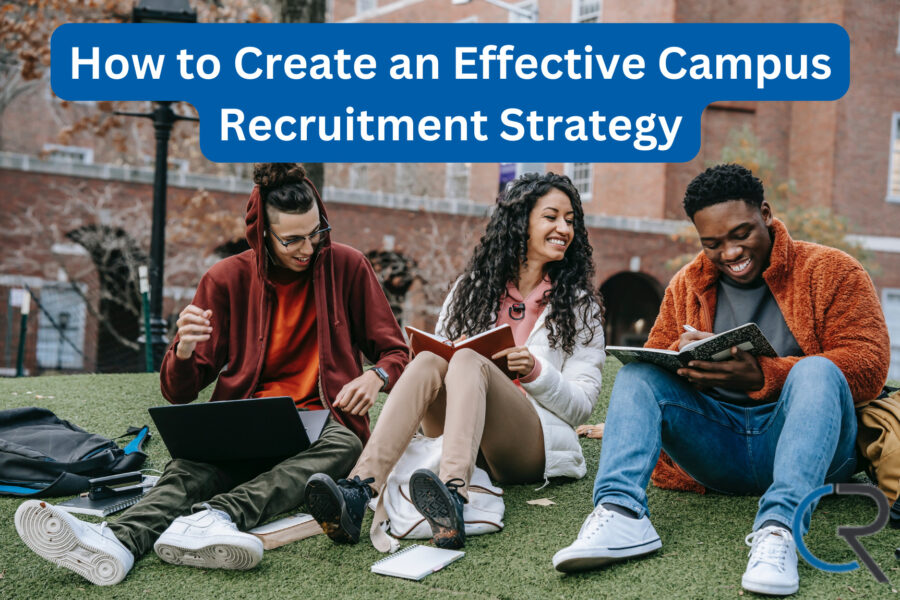It often seems as if recruiting in colleges and universities is an impossible task. Many different pressures are pushing organizations away.
- University enrollment is down.
- The proliferation of online, open-source, and accessible channels for learning suppresses enrollment further.
- Demographics in higher education have been changing rapidly.
- Traditional methods of reaching university students have less and less impact.
And all of this says nothing of the global pandemic that essentially erased one school year and is poised to suppress a second.
“Updated figures from the National Student Clearinghouse Research Center (NSCRC) show that overall college enrollment fell to 16.9 million students this spring, down more than 600,000 students from a year ago. That one-year decline of 3.5% is the largest spring semester enrollment decrease since 2011” – Forbes.com.
In this blog post, I explain how a company can create a booming campus recruitment strategy.
Pick Specific, Targeted Schools
Many employers attend job fairs and top-tier schools and wonder why they don’t seem to recruit very many talented graduates. The truth is, there’s so much competition for those graduates that it can be difficult to stand out from other employers in your sector to get any attention.
It’s often much better to pick more local or more focused schools to target your recruitment efforts. ConveyIQ recommends:
“Depending on your budget, start by creating a list of five to 10 schools that offer some of the key majors you’re targeting. Then, divide that list into two tiers. The first tier should be your primary schools—the ones where you think you’re most likely to find your top talent—while the second tier can consist of “dream schools” and schools that are outside of your geographical area. Once you’ve identified your target schools, you can start creating your strategy.”
Rather than targeting big-name schools, target schools with dedicated programs training students in the exact areas of expertise you need. Local schools can also provide potential candidates who already have familiarity with your company, a family history with you, or some other tie that makes them more likely to work out.
Use Every Channel Available to You
Modern recruiting requires more than your stereotypical flyers on campus, radio ads, and booth at the occasional career fair. You need to take advantage of every channel available to you, especially the ones most frequently used by your target generation and cohort.
These might include, but are not limited to:
- Create a branded, responsive careers website with copy that speaks to student interests and concerns.
- Launch a blog that provides relevant information to graduates and candidates.
- Build a social media presence that is active, responsive, and relevant to recruitment.
- Email marketing, with lead generation and nurturing.
- Brand ambassadors who spend plenty of time on campus, working with students directly, potentially working with guidance counselors and other student outreach systems as well.
- Influencer outreach. Identify influential individuals to your audience, including parents and authority figures at the school, and network with them.
- Visit campus more often than just during career days, and make yourself available for student questions at any time.
- Early outreach, including high school outreach, to guide prospective candidates to school programs that benefit you when they graduate.
- Scholarship funding to help train students in exactly the programs you want to recruit.
Don’t forget, as well, that a growing portion of the student body at your target organization is likely to be international students. Make sure that your company is set up to recruit a diverse team, including varied personal demographics, ethnicities, national origins, and intersectionality.
Establish and Sustain a Long-Term Relationship
We’ve already mentioned establishing a relationship with schools and guidance counselors, but you need to build and sustain another relationship with students. Consider that the best asset in recruiting is a candidate who will stay with your company for many years, growing in their role, building institutional knowledge, and rising through the ranks. Show them the same loyalty.
A modern recruitment channel may begin in high school, gauging interest with students and encouraging them to investigate programs that benefit your company. It could be IT to help manage your computer systems; it could be business, finance, supply chain management, logistics, or any of a thousand other roles. Identifying potential career paths is the first step, and matching them with interested students allows you to help guide those students towards university programs that funnel them directly to your campus recruitment process.
Throughout the university experience, maintain a relationship with the school, with individual counselors, administrators, and professors in your target areas. Help by providing funding, information, and accessibility. Encourage interested students to talk to your recruiters, learn more about your company, and consider their place in your organization.
Every resource you can provide, any assistance you can offer, any relationship you can build helps you establish yourself as a beneficial connection for a student to have. When many students find their independence and are reaching out for any support they can find, you can provide that foundation.
Offer Paid Internships
The days of the unpaid internship are over. Modern students cannot afford the time without compensation, no matter how valuable the experience may be – and often, that experience is not practical. Unpaid internships are, more and more frequently, being considered nothing but scams.
The Harvard Business Review discusses the systemic issues with unpaid internships in greater detail. Among their observations:
“The survey made one other startling observation: Students who had never had an internship received the same number of job offers as unpaid interns.”
Along with imbalanced racial and ethnic distribution, the truth is that unpaid internships are not valuable to either students or companies looking for real candidates. If you’re going to offer an internship at all, make it paid.
Track and Monitor Key Performance Indicators
No effort in business should be left without oversight. Your sales numbers, your website performance, your employee productivity; everything is laced with key performance indicators that you monitor, looking for ways to remove roadblocks, streamline processes, and improve outcomes. Recruitment should be no different.
Campus recruitment has a range of its own key performance indicators that are worth monitoring. Different metrics can be paired with specific goals and adjusted to achieve particular outcomes. For example:
- If your goal is to source more candidates, you can measure the size of your candidate pool, the events you attend, the source of your most effective hires, and the completion rate for applications.
- Suppose your goal is to improve candidate quality. In that case, you can measure the number of candidates in your pool per hire, the number of new candidates per recruiting event, and the number per organization or university.
Yello offers a robust guide on identifying and establishing these key performance indicators. It’s worth reviewing to determine what data you should monitor, how you should monitor it, and how it should inform your decision-making.
Employ the Right Recruiters
While much of your recruitment will go on through digital advertising, passive advertising in flyers, print ads, posters, and sponsorships, as well as information campaigns, the true stars of the show will always be your in-person recruiters.
These recruiters must meet the necessary qualifications to relate to and engage with students and prospective candidates.
“Some of the greatest recruiters I have seen on my team have been people who truly care about the people that they’re helping. One of the most important things in someone’s life is what their career is going to be, and the best recruiters know how to talk to [candidates], treat them like people, and then essentially get them the job they’ve always dreamed of.” – Yello
Good recruiters must have certain qualities that allow them to engage with students in the right way.
These qualities include:
- Students are nervous, particularly as graduation nears. The job market is in constant flux, there’s massive uncertainty about the world, and the expenses of university weigh heavily upon the shoulders of the current graduating cohorts. Being able to empathize and convey that you truly want to help is a critical skill for a recruiter.
- With the aversion to unpaid internships but the relative scarcity of paid work experience, many graduates enter the job market with no experience in their chosen field. Thus, rather than requiring expertise to filter out candidates, talented recruiters look deeper and learn to spot potential.
- Modern recruitment strategies don’t work with the youngest generations, who are often jaded and cynical about the traditions and habits of those who came before them. A recruiter today needs to be able to engage with these students on their own terms, reaching out to them in innovative, unique ways and engaging them in their comfort zones.
There is no perfect recruiter; the culture of each graduating class, of each different school or geographic region, can vary wildly. Adapting to a specific area, a particular group, and a certain niche is critical for success in modern college recruitment.
Create Student Personas
Just as your marketing department creates buyer personas for different types of people who might make a purchase from your company, so too should your hiring department create student personas for your campus recruitment efforts.
Student personas help ensure that your marketing is targeted towards the right groups of people, reaching them where they look with the messaging they’re interested in. These personas should be based on archetypes you see from your top past hires, though you shouldn’t look too far in the past; someone you hired ten years ago is likely not relevant to today’s student body.
You can further identify and refine your student personas using real-world data. For example, conduct surveys with the student body to see if people have heard of you, and if so, how. Analyze enrollment data from the university to examine their demographics, particularly among their best-performing students. And, of course, include as much data as is relevant, such as GPA, major, minors, interests, and more. Just make sure not to exclude specific protected classes to avoid violating compliance regulations and laws.
Further, don’t limit yourself to one or two personas. Create as many personas as there are archetypes of students who can succeed within your organization. Remember, too, that student personas are not static; they are evolving pictures that reflect current trends. They can change and adapt as the student body changes, and they can split off into variations as necessary.
Moreover, it’s critical that you use these personas. Each persona represents a different group of people who can be reached in different locations, both geographically and technologically. Use other channels, target them with additional messages, and reflect their interests. Some are concerned about money; some are concerned about humanitarian fulfillment; some are concerned about workplace safety and ethics.
Be aware of what your prospective candidates are most concerned about, and provide them the information they need to see to apply.
Never Stay Static
Every graduating class is unique in different ways. Recruitment strategies that worked as recently as a couple of years ago may not reflect current trends and concerns. Thus, one of the most important lessons any company can take to heart is that things change. Recruitment strategies need to change with the times, or they will fall behind.
Constantly monitor results, and adjust your data based on what they tell you. Adjust student personas, adjust marketing messages and techniques, adjust channels, adjust budgets. A company that remains static is a company that will lose interest and attention on campus and will fail to pick up the best potential candidates from the student body.
Above all else, students want empathy, value, and support from their work environments. It’s no longer just about a paycheck or a benefits package. It’s about ethics, it’s about diversity, and it’s about loyalty. When you can portray your company as a place with attention to these concerns, you can attract the most engaged, talented, and valuable candidates.
Take this moment to reflect on your current recruitment strategies. Are they flexible, adaptive, and contemporary? If you want to remain at the forefront of talent acquisition, there’s no time for complacency. Dive deep, evolve, and ensure you’re always in alignment with the next generation’s desires. Ready to revolutionize your recruitment game? Let’s connect and shape your future together. Reach out to us for bespoke solutions and insights tailored to your needs.



